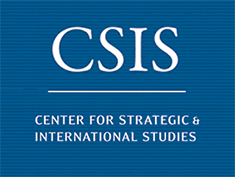 Twenty Critical Security Controls for Effective Cyber Defense: Consensus Audit Guidelines
Twenty Critical Security Controls for Effective Cyber Defense: Consensus Audit Guidelines
The Twenty Critical Security Controls have already begun to transform
security in government agencies and other large enterprises by focusing
their spending on the key controls that block known attacks and find
the ones that get through. With the change in FISMA reporting
implemented on June 1, the 20 Critical Controls become the centerpiece
of effective security programs across government These controls allow
those responsible for compliance and those responsible for security to
agree, for the first time, on what needs to be done to make systems
safer. No development in security is having a more profound and far
reaching impact.
These Top 20 Controls were agreed upon by a powerful consortium
brought together by John Gilligan (previously CIO of the US Department
of Energy and the US Air Force) under the auspices of the Center for
Strategic and International Studies. Members of the Consortium include
NSA, US Cert, DoD JTF-GNO, the Department of Energy Nuclear
Laboratories, Department of State, DoD Cyber Crime Center plus the top
commercial forensics experts and pen testers that serve the banking and
critical infrastructure communities.
The automation of these Top 20 Controls will radically lower the cost
of security while improving its effectiveness. The US State Department,
under CISO John Streufert, has already demonstrated more than 94%
reduction in "measured" security risk through the rigorous automation
and measurement of the Top 20 Controls.
A Brief History Of The 20 Critical Security Controls >>20 Critical Security Controls - Version 4.1
- Critical Control 1: Inventory of Authorized and Unauthorized Devices
- Critical Control 2: Inventory of Authorized and Unauthorized Software
- Critical Control 3: Secure Configurations for Hardware and Software on Mobile Devices, Laptops, Workstations, and Servers
- Critical Control 4: Continuous Vulnerability Assessment and Remediation
- Critical Control 5: Malware Defenses
- Critical Control 6: Application Software Security
- Critical Control 7: Wireless Device Control
- Critical Control 8: Data Recovery Capability
- Critical Control 9: Security Skills Assessment and Appropriate Training to Fill Gaps
- Critical Control 10: Secure Configurations for Network Devices such as Firewalls, Routers, and Switches
- Critical Control 11: Limitation and Control of Network Ports, Protocols, and Services
- Critical Control 12: Controlled Use of Administrative Privileges
- Critical Control 13: Boundary Defense
- Critical Control 14: Maintenance, Monitoring, and Analysis of Audit Logs
- Critical Control 15: Controlled Access Based on the Need to Know
- Critical Control 16: Account Monitoring and Control
- Critical Control 17: Data Loss Prevention
- Critical Control 18: Incident Response and Management
- Critical Control 19: Secure Network Engineering
- Critical Control 20: Penetration Tests and Red Team Exercises
Download Spring 2013 Poster
 This work is licensed under a Creative Commons Attribution-NoDerivs 3.0 Unported License.
This work is licensed under a Creative Commons Attribution-NoDerivs 3.0 Unported License.To further clarify the Creative Commons license related to the 20 Critical Controls content, (i) All persons are authorized to use the content as a framework in their organization or to sell professional services related to the content (e.g. a consulting engagement to implement the 20 Critical Controls), and (ii) sale of the contents as a framework model is not authorized. Users of the 20 Critical Controls framework are also required to refer to http://www.sans.org/critical-security-controls/ when referring to the 20 Critical Controls in order to ensure that users are employing the most up to date guidance
No hay comentarios:
Publicar un comentario